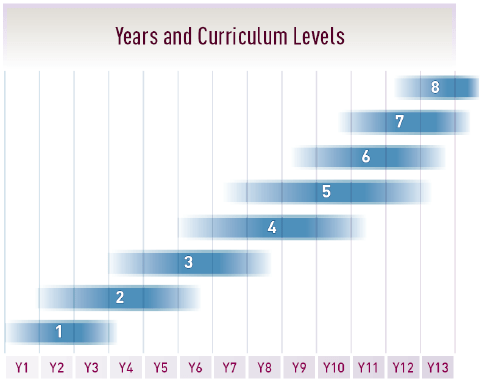In Years 9 & 10 there are many subjects for you to choose from. We want you to have the chance to develop areas of personal interest or strength, as well as the chance to try things you have never experienced before. Make the most of this opportunity to experience a range of subjects before deciding what you want to specialise in when you get to the senior school.
Read the subject descriptions on the Junior Course Descriptions webpage carefully before making up your mind. Discuss the subject choices that may be right for you with parents/caregivers.
Choose subjects that build on your strengths and interests, as well as subjects that may aid in the growth and development of areas where you may have room for improvement.
Look ahead to see where subjects lead in the senior school. Use the CURRICULUM OVERVIEW 2025 to help you with this.
Remember to ask for advice and guidance. There are many people who can help you decide on the subjects that are right for you.
Learning Areas – important for a broad, general education
The New Zealand Curriculum specifies eight learning areas: English, the Arts, Health and Physical Education, Learning Languages, Mathematics and Statistics, Science,
Social Sciences, and Technology.
In Years 9 – 11 all students experience learning in each of these eight learning areas.
The learning associated with each area is part of a broad, general education and lays the foundation for specialisation in later years.
YEAR 9
As a Year 9 student you will experience each of the eight learning areas as follows:
You will follow a core programme in five learning areas: English, Physical Education/Health, Mathematics, Science, and Social Studies.
In addition to this,
You can take TWO full year subjects and THREE half year subjects.
or
You can take ONE full year subject and FIVE half year subjects.
or
You can take SEVEN half year subjects and NO additional full year subjects.
You will make choices within the other three learning areas: the Arts, Languages, and Technology.
You must take:
Aotearoa Histories is a compulsory, half year subject for all Year 9 students.
Te Reo is compulsory for all Year 9 students, either Half Year or Full Year. If you choose the Half Year option, you still need to choose another language. If you choose Full Year Te Reo you do NOT have to choose a second language.
NOTE: All non-compulsory subjects are dependent on numbers and staffing.
YEAR 10
Years and curriculum levels
The diagram below shows how curriculum levels typically relate to years at school. Note that many students do not necessarily fit this pattern, for example, those with special learning needs, those who are gifted, and those who come from non-English speaking backgrounds.
Broadly speaking, our Year 9 subjects target Level 4 of the curriculum and our Year 10 subjects target Level 5, laying the groundwork for transition to Level 6 in Year 11. Knowledge and skills from earlier curriculum levels are reinforced within a differentiated programme, taking account of individual learning needs in each class. Challenge and extension at higher curriculum levels is also provided depending on individual learning needs.
Note: Level 1 is the entry level if you are learning a language you have not learned before, regardless of which year you are in at school.

Diagnostic testing
All of our students complete baseline assessments in literacy and numeracy at the beginning of Year 9. Your results help us to understand what you can do already, what gaps you may have in your learning, and what you need to learn next. They help your teachers design programmes suited to your learning needs, and to provide the support and/or extension you may require. They also show how well you are learning in comparison with other students nationwide. Further testing of reading, writing and maths is done again at the end of Year 9 so that we can see the progress you have made and set new goals as a result.
Most Year 10 students will sit the NCEA corequisite Literacy and Numeracy tests in Term 3 2025.
NCEA Levels 2 & 3
Standards available are organised into levels of increasing difficulty. Standards assessed at school are usually at Levels 2 and 3.
From 2024, WGC no longer offers NCEA Level 1. In Year 12, students will progress to Level 2, and Level 3 in Year 13. NCEA Level 2 aligns with curriculum level 7; and NCEA Level 3 with curriculum level 8.
Charges in addition to standard stationery costs are noted where relevant with each subject’s information, as well as any specialist equipment you may need access to for particular subjects.
In cases of hardship, please make contact with the school either via the Guidance Counsellor, the Dean, or the Finance Office.
Note: Stationery lists for each year level can be accessed in the Start and end of year folder under both the 4students and 4parents tabs on our website. Stationery lists for 2024 will be available in this folder in early December.
We strongly recommend that you bring your own internet-capable device to school for learning. This could be a Chromebook, Ultrabook, laptop, or other device. Note that a smartphone is not a suitable device as it does not have the functionality required for many of the BYOD uses outlined below.
Wellington Girls’ College is a Google Apps school. This means you can access email, calendar and documents for collaborative learning anytime and anywhere. Our website is the springboard to Google Apps and to all your courses as well as to a range of information and help topics under the 4students tab. Take time to explore our website regularly until you are familiar with it and can find what you need exactly when you need it.
You and your parents can find information on BYOD@WGC in the IT and BYOD folder under both the 4students and 4parents tabs.